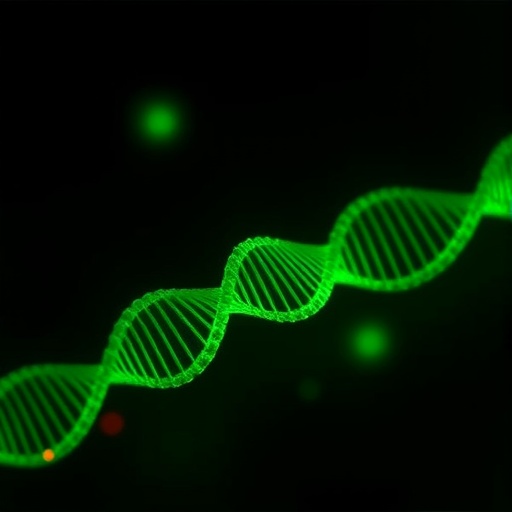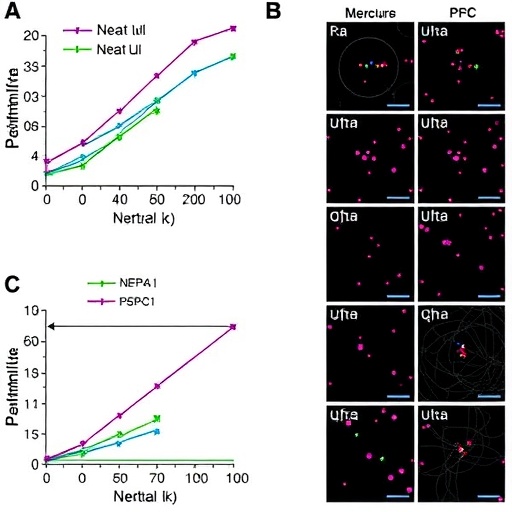
In a groundbreaking advancement poised to revolutionize both clinical diagnostics and live-cell metabolic studies, researchers have unveiled a novel genetically encoded biosensor specifically designed for the precise detection of D-2-hydroxyglutarate (D-2HG). This innovative tool not only promises to advance point-of-care testing but also enables real-time monitoring of cellular metabolism, addressing a significant need in both medical and biological research domains. The study, recently published in Nature Communications, represents a fusion of molecular engineering, metabolic biochemistry, and bioengineering, culminating in a biosensor that is both highly specific and sensitive.
D-2HG is a metabolite of growing biomedical importance, recognized largely due to its role as an oncometabolite—an aberrant metabolite associated with cancer development and progression. Elevated levels of D-2HG have been linked to cancers such as gliomas and acute myeloid leukemia, in addition to certain metabolic disorders. Despite its significance, existing detection methods suffer from drawbacks including complexity, invasiveness, and limits in temporal resolution. Conventional techniques often rely on mass spectrometry or chromatography, which, while precise, necessitate laborious sample preparation and are confined to centralized laboratories. The advent of a genetically encoded biosensor circumvents many of these issues, facilitating bedside or even in situ metabolic analysis.
At the heart of this innovation lies a biosensor composed of a genetically encoded fluorescent protein fused to a D-2HG-binding domain. The design is elegantly tailored: upon binding D-2HG, conformational shifts induce quantifiable fluorescence changes, offering an instantaneous readout of metabolite concentration. This allosteric sensing mechanism allows for both quantitative and dynamic tracking, an essential feature when monitoring fluctuating metabolic landscapes within live cells. By employing fluorescence resonance energy transfer (FRET) or intensity-based fluorescence modulation, the biosensor converts molecular recognition events into optical signals, easily captured by standard microscopic and photometric devices.
.adsslot_IY2EpFByHw{width:728px !important;height:90px !important;}
@media(max-width:1199px){ .adsslot_IY2EpFByHw{width:468px !important;height:60px !important;}
}
@media(max-width:767px){ .adsslot_IY2EpFByHw{width:320px !important;height:50px !important;}
}
ADVERTISEMENT
Developing a sensor that distinguishes D-2HG from its chiral counterpart, L-2HG, posed a challenging biochemical conundrum. The research team harnessed the specificity of natural D-2HG-binding proteins, identified through extensive bioinformatic mining and structural modeling. Through iterative protein engineering and mutagenesis, they enhanced binding affinity and selectivity, ensuring minimal cross-reactivity. The final construct exhibits a remarkable ability to discern subtle concentration variations in complex biological milieus, an achievement critical to its utility in live-cell imaging and clinical diagnostics.
The functional validation of the biosensor involved rigorous testing in both cell lysates and living cells. In vitro assays demonstrated the capacity to detect D-2HG concentrations spanning physiologically and pathologically relevant ranges. Live-cell experiments revealed dynamic metabolic changes, enabling researchers to visualize D-2HG fluxes in response to genetic or pharmacological perturbations. This real-time insight into oncometabolite dynamics opens new avenues for understanding cancer metabolism and therapeutic responses, accelerating translational research efforts.
Moreover, the genetically encoded nature of the biosensor permits its introduction into various model systems via gene transfection, transduction, or stable genome integration. This versatility extends beyond human cells to microbial and animal models, where D-2HG-related metabolic pathways are conserved or implicated. Such adaptability enhances its scope in broad biomedical research contexts, ranging from developmental biology to drug screening platforms.
Of particular interest is the biosensor’s potential in point-of-care diagnostics. The portability and ease of fluorescence detection suggest a future where bedside metabolic monitoring could become a reality. This capability would empower clinicians with rapid, actionable insights into patient metabolic status, facilitating early diagnosis, real-time treatment monitoring, and personalized medicine approaches, especially in oncology where D-2HG serves as a biomarker for specific tumor types harboring isocitrate dehydrogenase (IDH) mutations.
In an era increasingly emphasizing precision medicine, tools that provide the temporal resolution of metabolic fluxes are invaluable. Traditional snapshot measurements of metabolites provide limited context about disease progression or treatment efficacy. This biosensor, by enabling continuous monitoring, captures the dynamic nature of metabolism and its nuanced interplay with cellular states. Such data richness promises refinement in disease modeling, therapeutic targeting, and our overarching understanding of metabolism’s role in health and disease.
Technologically, the engineering challenges surmounted in this research exemplify the power of interdisciplinary synthesis. Structural biology illuminated binding interfaces, synthetic biology principles guided sensor optimization, and optical physics underpinned signal transduction strategies. The seamless integration of these fields culminated in a functional biosensor with not only research but also clinical potential. The study’s comprehensive methodological approach serves as a template for the design of similar metabolite-specific sensors in the future.
Beyond cancer and metabolic disorders, D-2HG is implicated in broader physiological processes intersecting with epigenetics, redox biology, and mitochondrial function. Monitoring its fluctuations in live cells therefore touches upon fundamental biological questions. This biosensor could unveil previously inaccessible insights into how D-2HG orchestrates cellular signaling networks and contributes to pathophysiology. The translational implications range from uncovering novel drug targets to redefining biomarker paradigms in various diseases.
Importantly, the researchers addressed biosensor stability and biocompatibility, crucial factors for clinical uptake. Codon optimization, minimal cytotoxicity, and robust fluorescence output ensure that the sensor operates efficiently within cellular environments without perturbing native functions. These considerations mitigate common hurdles faced by genetically encoded sensors, such as photobleaching and interference with endogenous processes, thus reinforcing the sensor’s applicability in longitudinal studies.
The biosensor also holds promise in drug discovery and development pipelines. By enabling high-throughput screening of candidate compounds’ effects on D-2HG metabolism, it accelerates identification of effective inhibitors or modulators of pathological metabolic pathways. This application links molecular diagnostics with therapeutic innovation, exemplifying the sensor’s multifaceted utility.
Contextually, the importance of such a biosensor extends into emerging fields like synthetic biology and metabolic engineering. The capacity to monitor intracellular metabolite levels informs the design and optimization of engineered cells producing valuable metabolites or serving as biosynthetic factories. D-2HG detection becomes not only a diagnostic tool but a feedback element in synthetic circuits, enabling sophisticated metabolic control strategies.
The publication resonates beyond academic circles, heralding a paradigm shift in how metabolic biomarkers are detected and exploited clinically. Its viral potential stems from addressing urgent unmet needs in biomedical diagnostics with a tool that is elegant, efficient, and scalable. As metabolic reprogramming is recognized as a hallmark of various diseases, the demand for such precise, dynamic detection platforms will inevitably rise, positioning this genetically encoded biosensor at the forefront of future biomedical innovations.
In summary, the deployment of this genetically encoded D-2HG biosensor marks a pivotal step in merging biosensing technology with metabolic disease management. It bridges fundamental research with clinical application, offering a versatile, robust, and sensitive approach to monitor an oncometabolite intricately linked to human health. This advancement underscores the transformative power of interdisciplinary science, promising to reshape diagnostics, therapeutics, and biochemical understanding alike in the near future.
Subject of Research: Genetically encoded biosensor development for detecting D-2-hydroxyglutarate in point-of-care and live-cell contexts.
Article Title: A genetically encoded biosensor for point-of-care and live-cell detection of D-2-hydroxyglutarate.
Article References:
Liu, Y., Kang, Z., Xu, R. et al. A genetically encoded biosensor for point-of-care and live-cell detection of D-2-hydroxyglutarate. Nat Commun 16, 6913 (2025). https://doi.org/10.1038/s41467-025-62225-8
Image Credits: AI Generated
Tags: biomedical research applicationscancer-associated metabolitesD-2-hydroxyglutarate detectiongenetically encoded biosensorlive-cell metabolic studiesmetabolic biochemistry innovationsmolecular engineering breakthroughsNature Communications publicationnon-invasive detection methodsoncometabolite significance in cancerpoint-of-care testing advancementsreal-time cellular metabolism monitoring





